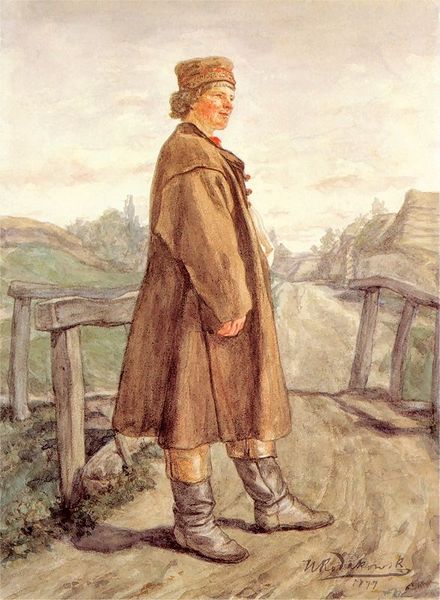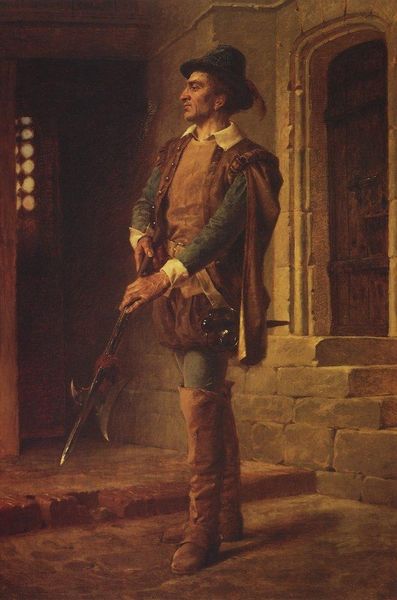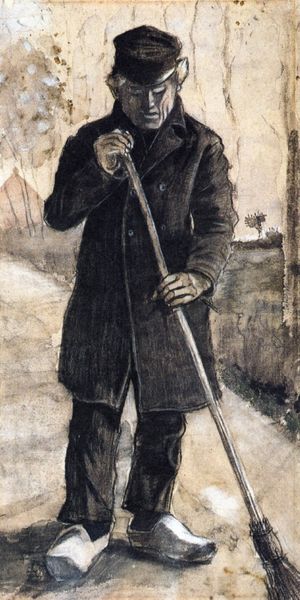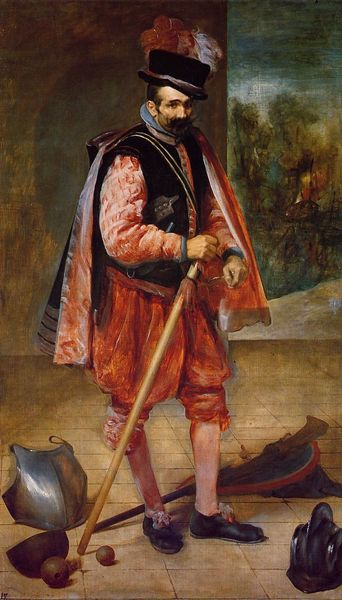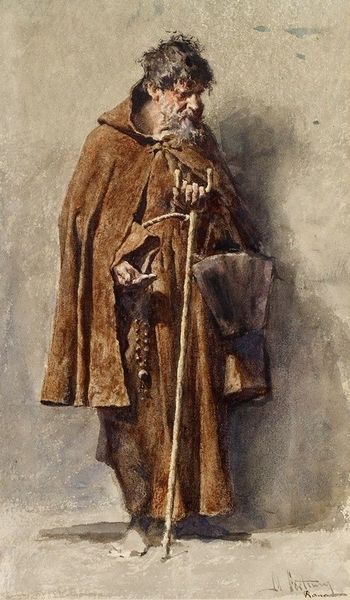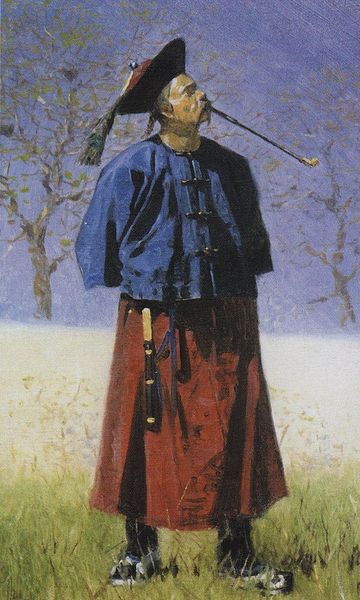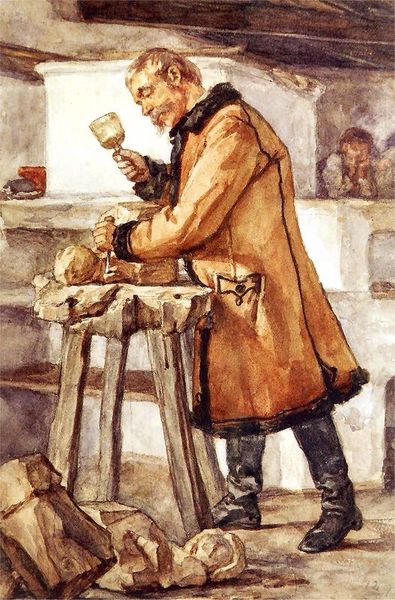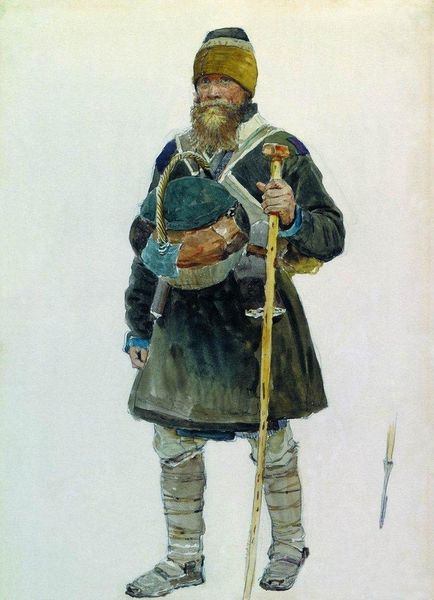
Copyright: Public domain
Curator: This is Henryk Rodakowski's "Ukrainian," painted in 1868. It presents a full-length portrait of a man standing in what appears to be a snowy, rural setting. Editor: He certainly looks ready for winter! The fur-trimmed coat is wonderfully tactile; I can almost feel the roughness of the wool and the softness of the fur. And it is watercolor! Very well executed, indeed! Curator: Indeed. Rodakowski was known for his portraits of Polish aristocracy and intellectuals. Though, notably, here, rather than capturing a figure of high society, he portrays a man from what appears to be a different social class, evident in his attire. It prompts questions about the artist’s shifting social focus and who gets represented in art at specific junctures of history. Editor: The coat is rather fascinating, actually. The craftsmanship involved in its making—the tanning of the hide, the furrier's skill, even the embroidery details, it suggests a localized production. Not a factory churning out coats, but individual makers using traditional methods, thus grounding it in very material and social reality. Curator: The timing is crucial too. The 1860s in partitioned Poland were marked by a rise in national consciousness after the failed January Uprising in 1863. Rodakowski painted portraits reflecting Polish identity through individual likeness, which aligns with broader social movements emphasizing regional culture as resistance. Editor: Absolutely. And to think of it from the wearer’s point of view, such attire provides physical and cultural comfort, right? A shield, even, against the elements and social forces pressing down. That's where the material resonates, you can read its history like a text. Curator: A very insightful interpretation. The context certainly lends to reading the piece not just as a personal portrayal but as a statement about the era. It demonstrates how portraiture can act as both a mirror reflecting individual character and a window into understanding cultural dynamics. Editor: And the choice of watercolor, a medium often relegated to studies or preliminary sketches, makes you wonder: was it deliberate to emphasize accessibility, in contrast to grand oil paintings which cater more to aristocratic tastes? It invites a more inclusive examination of art production. I appreciate the humble qualities of watercolor painting and materiality. Curator: A worthy perspective! Ultimately, "Ukrainian" offers multifaceted narratives about individual experience within a turbulent sociopolitical climate. Editor: It's a fascinating display of history imbued within both representation and matter. I am convinced the way something is crafted tells us as much, if not more, than what is ostensibly depicted.
Comments
No comments
Be the first to comment and join the conversation on the ultimate creative platform.
